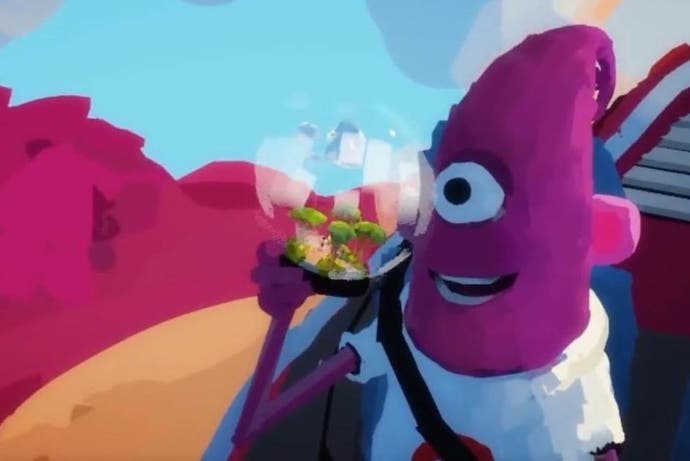A glimpse of VR's infinite canvas
Quillswitch.
I've become obsessed with paintings recently. Not art in general: paintings. I've been going to galleries in London and leaning in close to see the brush strokes on the canvas or the wood. I've been learning about glazes, tints, and something called scumbling, which, it transpires, is almost as good as its name. It's been...amazing.
This started off because of my recent crush on Velazquez, an artist who applies paint so thinly that you can sometimes see the weave of the canvas peering through. He gets this incredible depth of feeling - integrity, the sense of a private moment captured and explored - and he does it with the lightest of materials, applied with a long-handled brush. You get a sense of speed. He's a genius, but the thinness of his paint really takes him to another level. Everybody who loves Velazquez mentions it: so little paint, and he does so much with it.
In a book by Matthew Collings I got a glimpse of what I've truly become obsessed with. Matthew Collings is an art writer of imagination and playfulness - he reminds me a bit of our own Bertie - and he's a painter, too. In Matt's Old Masters, he writes about the appeal of paint: "...the idea that the handling of it has an expressive, rich, luxurious life of its own."
"Anything can be art," he says, "but...I'm always surprised by the endlessness of painting... The type of painting I find gripping is the type where you can say, 'Well, the paint is everything here,' regardless of what the subject matter is or what's known about what was going on in society at the time."
I can't paint, but that passage rang a silver bell in my head when I read it. And the bell rang again this morning when I saw Worlds in Worlds on a friend's Facebook page. Worlds in Worlds is a work by Goro Fujita, who's the art director at Oculus Story Studio as well as a children's book illustrator.
I'm not going to talk about Worlds in Worlds very long, because it explains itself eloquently in the video above. It's made with Quill, a VR painting tool, and it's Fujita's response to the "infinite canvas" that Quill allows him: a canvas with boundless depth, where paint can hang in space, can form a solid sphere on which painted people can drive cars and stand and hold up soap bubbles, in which there are new worlds, with their own nested intricacies. A painting you can climb inside, a painting with corners that you can peer around.
And, well, the paint is everything here. It's so tangible, so alluring: a material that has made everything and made the exploration of a digital realm an almost tactile experience. Is it paint? Is it pixels? It's both, and it's also something new. We're inside it: art is made of stuff, and here is the stuff this art is made of.


